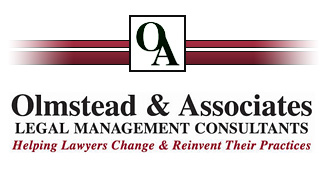Law Practice Management Asked and Answered Blog
Category: Retainer
Jun 06, 2017
Law Firm Collections/Retainer Management – Using a Retainer Follow-up Report
Question:
I am the managing partner of a nine attorney general practice firm in the Chicago suburbs. We practice in the areas of estate planning/administration and family law. While our estate planning and uncontested family law work is done on a flat fee basis our estate administration and contested family law work is time billed. We collect initial retainers for these matters but we fail to insure that the retainers are replenished. We are having accounts receivable collection problems as a result. I would appreciate your thoughts.
Response:
This is a common problem that I see in firms doing estate administration and especially family law. The best way of managing your accounts receivable is to have less in outstanding accounts receivable in the first place. You do this by staying on top of your retainer balances compared to your work in process and ask the client for additional retainer before the work in process exceeds the retainer balance. In order to stay on top of retainer replenishment you need to develop what I call a retainer replenishment report and have someone assigned to reviewing the report daily and advising responsible attorneys to contact the client when work in process has hit a certain threshold (percentage of retainer used). Some firm’s present the report at a weekly attorney meeting and determinations are made regarding additional retainers to request. Other firms assign the responsibility to the firm administrator to automatically bill for the additional retainer. It is also important to insure that ongoing work is managed in a way that an excessive amount of work is not committed to a matter until the additional retainer replenishment is received.
A retainer replenishment report is not a standard report in many billing systems. You may have to create a custom report in your billing system using a report writer or in a worst case drop a accounts receivable report to an Excel file and add in some columns for the other information.
Here are the suggested data fields/columns for such a report:
Responsible attorney
Client/Matter name
Retainer Balance (typically this would be the balance in the trust account)
Unbilled WIP Fees
Unbilled Cost
Total Unbilled WIP
75% Retainer Threshold
Amount Over/Under Retainer
Additional Retainer Requested
Total Amount Retainer to Bill (Amount WIP over retainer plus additional retainer requested)
Many family law firms have advised me that after learning the hard way they are now doing a good job at this and advising me that they have minimal accounts receivable issues.
Click here for our financial management topic blog
Click here for our law firm profit improvement blog
Click here for articles on other topics
John W. Olmstead, MBA, Ph.D, CMC
Nov 29, 2016
Law Firm Retainer Management – Replenishment
Question:
Our firm is a five attorney estate planning/administration practice located in Kansas City. Our estate planning work is handled on a flat fee basis for our clients. We collect one half of the fee upon acceptance of the signed engagement letter and the other half upon signing of the estate planning documents. This has worked well for us. However, we are not doing so well with our estate administration work. This work is time billed against a retainer. We do a good job collecting the initial retainer but then we fail to ask for replenishment retainers and when we bill for the remaining work we have collections problems. We have are over six hundred and fifty thousand dollar in accounts receivable over 120 days old. We would appreciate your thoughts.
Response:
This is a common problem that I see in estate planning/administration and family law practices. Here are a few suggestions:
- Assign someone in the firm to review a Summary Work In Process Report or similar report that shows the dollar value of unbilled work in process and the dollar value of used retainer at least once a week. (Some firms do this daily)
- Flag matters that are at 90% of retainer (unbilled work value to unused retainer) and bill clients for retainer replenishment in accordance with firm policy.
- Advise responsible/billing attorney of the retainer status, that a bill has been sent for replenishment, and again when the payment of the additional has been received.
- Responsible/billing attorney should consider the retainer balance status when scheduling work on specific matters that have reached 90% of retainer balance.
- Send retainer replenishment bills as frequent as necessary. It is easier for clients to pay small bills than very large bills.
- Stay on top of your receivables – smile and dial (call) after bills have been outstanding for thirty days. Reminder bills and statements are a waste of time.
Click here for our law firm profit improvement blog
Click here for articles on other topics
John W. Olmstead, MBA, Ph.D, CMC
Categories
- Career Management
- Client Service
- Coaching
- Compensation
- Competitive Business Models
- COVID-19
- Culture
- Financial Management
- Governance
- Human Resources
- Laterals
- Leadership
- Management
- Marketing
- Mergers
- New Firm Startup
- Offices and Facilities
- Partnership
- Practice Sale
- Profit Improvement
- Project Management
- Strategy
- Succession/Exit Strategies
- Technology
- Trends
- Work Life Balance

